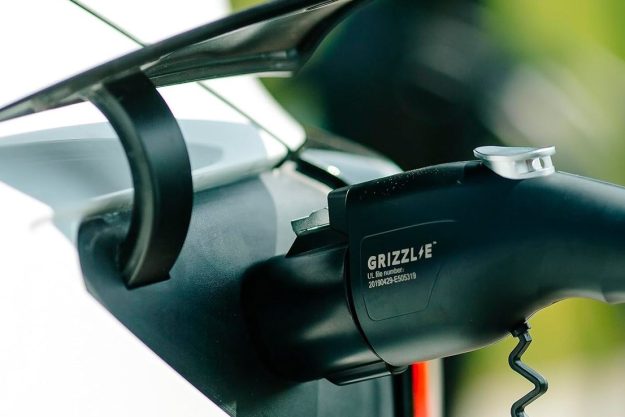This sentiment was on full display at CES 2017, because the industry was in full force on the show floor, the keynote stages, and all around Las Vegas. That said, this year’s show had a bit of a different flavor. There wasn’t a big production car reveal akin to the Chevy Bolt EV’s unveiling in 2016, but even though most of what we saw were concepts, there was plenty to digest. Follow along or click the video above for all our post-show thoughts.
Faraday’s future

Perhaps the biggest news to come out of CES — or at least the most hyped — was the debut of Faraday Future’s first pre-production vehicle. Dubbed the FF 91, the electric car is downright amazing on paper, with a 0 to 60 mph time that’ll make a Ferrari blush and more autonomous features than you can shake a stick at. Sounds great, right? Unfortunately, Faraday Future’s story isn’t all sunshine and rainbows.
Despite immense support from companies like LeEco and LG Chem, Faraday is in dire financial straits. Several executives have jumped ship recently, and to make matters worse, the group has suspended production of its manufacturing plant in Nevada. Faraday’s presentation was packed with hyperbole — the brand even compared itself to pioneers like Karl Benz and Tim Berners-Lee — even though it only had one “completed” car on the show floor, while the others had half-finished interiors and misaligned bodywork. We got the opportunity to ride in the car in Vegas, and while we were enamored with the car’s dynamics, the dark cloud surrounding the company makes its future very uncertain.
Will Faraday Future ever actually sell the FF 91 to customers? Gosh, we hope so.
Millennials in motion

Before we take the phrase, “Designed for millennials, by millennials,” into the backyard and bury it forever, let’s take one last look back at Chrysler’s Portal Concept. The product of FCA’s 20-year research project to determine what makes youngsters tick, the Portal is an amalgamation of vague characteristics that aim to define an entire demographic.
Millennials like to be driven, not drive, so the Portal features high levels of automation. They also crave customization, so the Portal wears color-changing LED panels all over its body so the occupant’s ride can match their moods. The design is futuristic and bold, of course, and the interior features slick touchscreens, tons docking ports, and loads of other connectivity options. We can’t help but poke fun at the car’s intentions, but if the Portal means Chrysler is serious about electric and driverless vehicles, we’ll give it a pass.
NASA in your Nissan

There was a lot to unpack from Nissan’s keynote address at CES, but if you love tech, one thing stood out in a big way. The brand announced a system called Seamless Autonomous Mobility (SAM), which was designed to monitor driverless cars remotely. Sam was Inspired by NASA’s ability to control interplanetary robots from afar, and uses humans called “mobility managers” to help autonomous cars deal with unpredictable situations.
Let’s say you’re riding along in your self-driving car and you encounter an obstacle. The only way around it is to cross a double yellow line or breach some other regulation. A human can deal with the situation easily — simply check to make sure it’s safe and move around the obstruction. Computers have trouble dealing with this grey area though, and that where the mobility manager comes in. By tapping into the car’s sensors and cameras, the manager can safely trace a new route, essentially telling the car it’s ok to (briefly) break the law so it can go about its business. As we shift from primarily analog driving to automated transportation, this type of human-machine cooperation will be paramount.
Alexa is everywhere

We’re living in the age of digitized intelligent personal assistants, and it’s about time the technology started working its way into our cars. At CES, both Ford and Volkswagen announced that Amazon Alexa will be integrated into their product portfolios, with Ford adding
The benefits to this are obvious —
A car that emotes?

Has your car ever winked at you? Toyota’s Concept-i can. It may seem a little strange, but Toyota wants to bring “kinetic warmth” to the driving experience, and thankfully, the brand’s aspirations go a little further than a simple flirt.
To bring man and machine closer together, the Concept-i houses an AI program called Yui. Yui is represented by a cute little sprite that zips around the car’s surfaces, learning the driver’s preferences, talking to them, measuring their emotions, and even communicating with other vehicles via illuminated body panels. The space-age Concept-i is a foray into Level 3 autonomy, which has been controversial due to the shared responsibility between human and computer. Yui helps make the transition easier by monitoring the driver’s attention level and road conditions.
The Concept-i is, you guessed it, just a concept, however Toyota hopes to one day use the show car’s technology in its production vehicles.
Autonomous arrival

Several automakers have pledged to bring fully automated driving to the roads by 2020, and Audi is one of the most prominent. At CES 2017, the automaker showed the fruits of its labor thus far, demonstrating a self-driving Q7 that left everyone who rode in it speechless. It also garnered our Top Automotive Tech award, so if you can’t tell by now, we were pretty impressed by it.
The Q7 leverages Audi’s Drive PX 2 self-driving car platform with a neural network called PilotNet. With this massive computing power on hand, the SUV was able to completely drive itself over a complex road course after just four days of “training.” This is due to the system’s uncanny ability to learn on the go, which is a far cry from the first driverless cars that needed pre-mapped routes to function. After seeing what Nvidia and Audi have been working on, the 2020 goal seems very attainable indeed.



